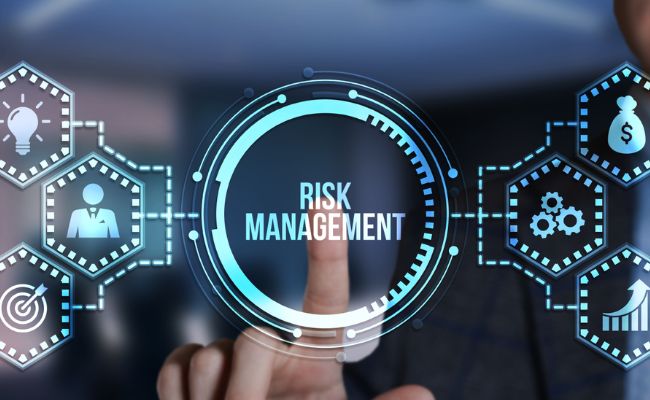
Executive Summary

This case study explores how a leading technology company faced dual challenges of intellectual property (IP) theft and product obsolescence, resulting in significant financial losses, loss of competitive advantage, and reputational damage. The IP theft involved the unauthorized replication of patented technologies by a competitor, while product obsolescence arose due to the rapid pace of technological advancements and market changes.
The company implemented a comprehensive strategy to address these risks, including strengthening IP protections, adopting a proactive innovation pipeline, and investing in lifecycle management of products. Through these measures, the company mitigated financial losses, regained market share, and established a robust framework to manage future risks.
This case study provides a detailed analysis of the root causes, solutions, and outcomes, offering actionable insights for organizations facing similar challenges in protecting their intellectual assets and staying relevant in a fast-evolving market.
Introduction
The technology sector is highly dynamic, characterized by rapid innovation and intense competition. While technological advancements present opportunities, they also expose companies to significant risks, including intellectual property theft and product obsolescence. IP theft can erode a company’s competitive advantage, while product obsolescence can render even cutting-edge technologies irrelevant in a short time.
This case study examines the experience of a global technology company that faced both these risks simultaneously. The company, known for its innovative products in the consumer electronics space, discovered that a competitor had replicated its patented technology, while several of its flagship products were losing relevance due to outdated features. The task was to address these challenges by safeguarding intellectual property, preventing obsolescence, and regaining its competitive edge.
Definition of Key Terms
1. Intellectual Property (IP) Theft: The unauthorized use, reproduction, or sale of patented, copyrighted, or trademarked materials without permission.
2. Product Obsolescence: The process by which a product becomes outdated or no longer useful due to technological advancements, market trends, or changes in customer preferences.
3. Lifecycle Management: Strategies to manage a product from inception to disposal, ensuring its relevance and profitability throughout its lifecycle.
4. Patents: Legal protections granted to inventors for their innovations, giving them exclusive rights to use and commercialize their inventions.
5. Competitive Advantage: A company’s ability to outperform its competitors due to unique capabilities, assets, or strategies.
The Problem
Challenges Faced by the Company:
1. Intellectual Property Theft:
- A competitor illegally replicated the company’s patented technology for battery efficiency and launched a similar product at a lower price.
- This resulted in lost revenue and a decline in the company’s market share.
2. Product Obsolescence:
- Key products in the company’s portfolio, including smartphones and wearables, were losing relevance due to outdated features and lack of innovation.
- Customer feedback indicated a preference for competitor products with advanced features, such as AI integration and improved user interfaces.
3. Regulatory and Legal Risks:
- IP theft exposed the company to regulatory scrutiny, requiring significant resources to pursue legal action against the infringing competitor.
4. Market Pressure:
- Competitors were launching new products at a faster pace, reducing the company’s ability to stay ahead in the market.
5. Reputational Damage:
- Perceived obsolescence and lack of innovation tarnished the company’s image as a technology leader.
The Solution
The company adopted a multi-pronged strategy to address both intellectual property theft and product obsolescence:
1. Strengthening IP Protections:
- Conducted an internal IP audit to ensure all innovations were properly documented and patented.
- Enhanced cybersecurity measures to prevent unauthorized access to proprietary designs and data.
- Partnered with legal experts to pursue litigation against the infringing competitor and seek compensation.
2. Innovation Pipeline Development:
- Increased investment in research and development (R&D) to accelerate the introduction of new technologies.
- Adopted an agile development approach to shorten product innovation cycles and respond quickly to market demands.
- Established a dedicated team for horizon scanning to identify emerging trends and technologies.
3. Lifecycle Management Strategy:
- Introduced updates and enhancements to existing products to extend their lifecycle and maintain relevance.
- Developed a phased obsolescence plan to transition customers to newer products seamlessly.
4. Strategic Partnerships:
- Collaborated with technology startups and research institutions to co-develop cutting-edge innovations.
- Partnered with ecosystem players, such as app developers and accessory manufacturers, to enhance product offerings.
5. Customer Engagement and Feedback:
- Established customer advisory panels to gather insights on preferences and expectations.
- Leveraged social media and surveys to understand market sentiment and identify areas for improvement.
The Results
Quantitative Outcomes:
1. IP Protection: The company successfully won the legal case against the infringing competitor, receiving $50 million in damages.
2. Revenue Growth: Enhanced products and new launches increased annual revenue by 20% within two years.
3. Market Share Recovery: The company regained 15% of its lost market share through improved product offerings and customer retention strategies.
4. Reduced Obsolescence Rate: The average lifecycle of key products increased by 30%, reducing the need for frequent replacements.
Qualitative Outcomes:
1. Restored Reputation: The company regained its positi
on as a technology innovator, receiving positive media coverage and customer endorsements.
2. Improved Customer Loyalty: Enhanced customer engagement and feature updates strengthened brand loyalty.
3. Innovation Ecosystem: Strategic partnerships fostered a collaborative environment for ongoing innovation.
Limitations
1. High Costs: Litigation expenses and increased R&D investments placed a temporary strain on financial resources.
2. Time-Intensive Processes: Addressing IP theft and revamping the innovation pipeline required significant time and effort, delaying some initiatives.
3. Market Dynamics: Rapid changes in market trends necessitate continuous vigilance and adaptation, requiring sustained investments.
4. Dependence on Partners: Collaboration with external partners introduced risks related to intellectual property sharing and competitive alignment.
Conclusion
This case study highlights the dual risks of intellectual property theft and product obsolescence in the technology sector. The company’s challenges revealed critical vulnerabilities in IP protection and innovation management, leading to financial losses and reputational damage.
The implementation of a robust strategy, encompassing legal action, enhanced R&D efforts, and lifecycle management, allowed the company to mitigate these risks effectively. The case underscores the importance of proactive IP management, continuous innovation, and strong customer engagement in maintaining competitive advantage. While challenges such as costs and market dynamics persist, the overall impact demonstrates the value of adopting a forward-looking approach to technology risk management.
Discussion: Major Problems Summarized
1. IP Theft: Unauthorized replication of patented technologies led to financial and competitive losses.
2. Product Obsolescence: Outdated features and lack of innovation reduced product relevance and customer appeal.
3. Reputational Damage: Perceptions of stagnation tarnished the company’s image as a technology leader.
4. Market Pressure: Fast-paced competition demanded accelerated innovation and agility.
Recommendations / Key Learnings and Takeaways
1. Proactive IP Management: Regularly audit and strengthen IP protections to safeguard proprietary technologies.
2. Accelerate Innovation: Invest in agile R&D processes to shorten product cycles and stay ahead of market trends.
3. Enhance Lifecycle Management: Continuously update and enhance products to extend their relevance and value.
4. Collaborate Strategically: Partner with ecosystem players to co-develop innovations and expand market reach.
5. Engage Customers: Use customer insights to guide innovation priorities and improve product offerings.
6. Monitor Competitors: Conduct competitive intelligence to identify potential IP risks and market opportunities.
References
1. WIPO (World Intellectual Property Organization). (2023). Protecting Intellectual Property in the Digital Era.
2. Christensen, C. M. (2024). The Innovator’s Dilemma: When New Technologies Cause Great Firms to Fail.
3. Smith, J. (2023). Lifecycle Management in Technology: A Strategic Approach. Journal of Product Management.


